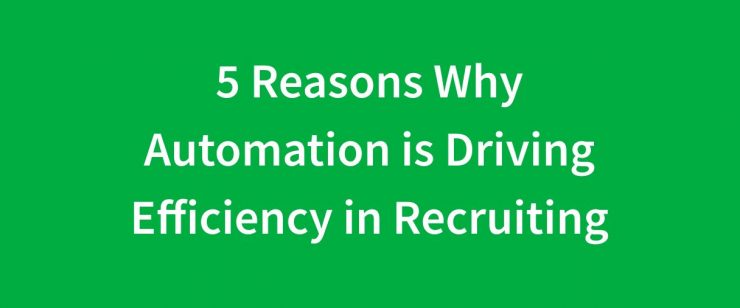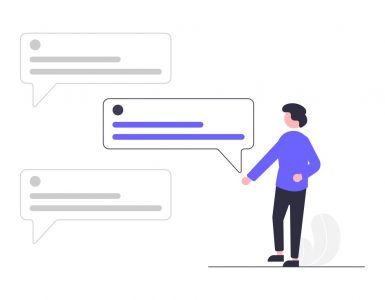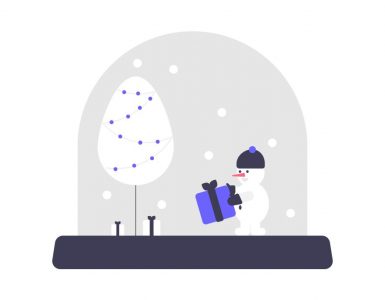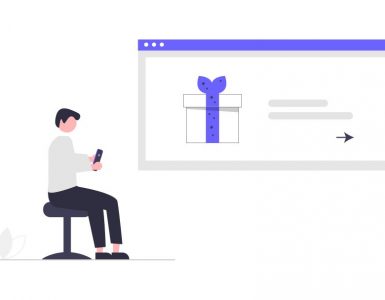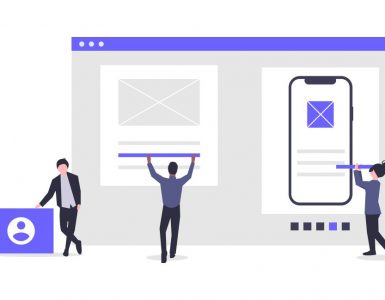Introducing automation into workflows has gone from a ‘nice to have’ to a ‘must-have’ for most enterprises in 2020. This is especially true for recruitment teams who have seen their hiring needs grow exponentially due to the impact of COVID-19.
HR leaders have had to fast-forward digital transformation from a two-year to two-week implementation, talent acquisitions leaders have either been in overdrive or helping out with internal communication while simultaneously watching their inbox pile up with questions from talent in the pipeline.
This is where the need for automation has come to the forefront. But what are the biggest impacts automation can drive efficiency in recruiting? We’ll explore the 5 largest reasons, some of which are taken from the Airbus Case Study – How Airbus Improved Their Candidate Globally with Bessie the Chatbot.
1. Manage High Volumes of Applications Seamlessly
According to a study by PWC, nearly half (49%) of job seekers say they’ve turned down an offer because of a bad candidate experience. One of the most common negative scenarios candidates experience is sending their CV to a prospective employer only to never hear back or receive a response too late.

From the recruiter’s side we know that this is a result of too many applicants and too little resources. Automation through conversational AI helps by sitting-in for the recruiter on basic candidate communication in the form of a chatbot interface on their careers site. The chatbot can answer frequently asked questions from candidates in high volumes easily.
Because a chatbot can answer thousands of questions simultaneously, recruiters can spend less time on repetitive tasks.
2. Job Discovery Guides Job Seekers to the Best Suited Role
Matching a candidate to the right job based on their CV is not best practice when it comes to automating recruitment. Think of the number of times you’ve been automatically recommended a job that isn’t relevant to your career. It is more efficient to use a chatbot to guide a job seeker to the right role with job discovery – this is when a chatbot asks the job seeker business-critical questions such as “What location would you like to work at?”, “Do you hold a driver’s license?” or “How many years experience do you have?”.
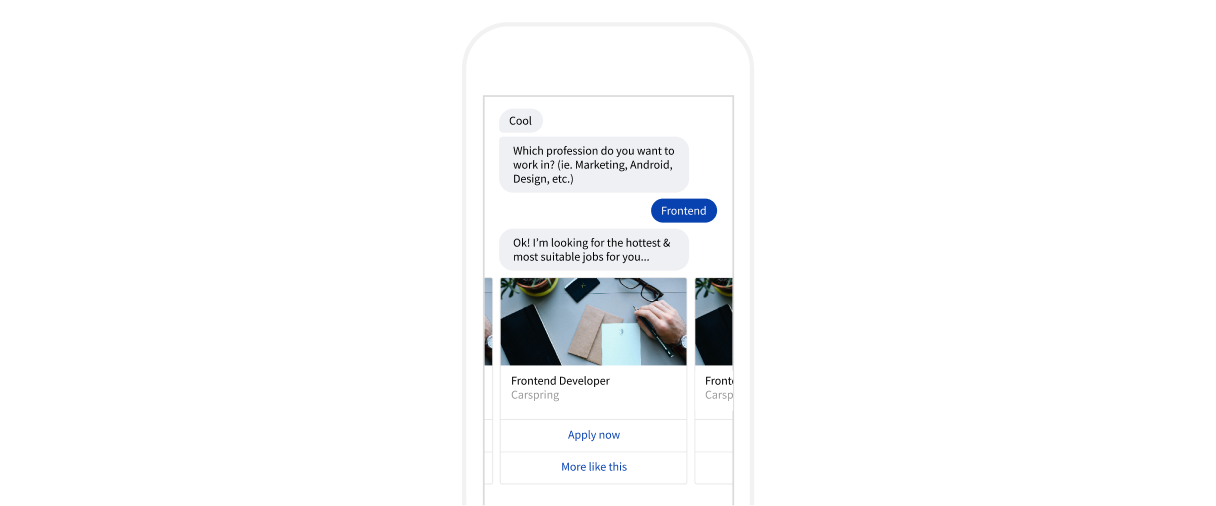
Think of customers in a new store, without assistance the likelihood of them leaving without buying is higher – the same thinking can be applied to users on your company’s career site. A chat interface is like a helpful store employee, they can offer guidance, provide more information and help your ‘customer’ make sure they’re not just buying the most suitable product but also engage with them instantly.

Recruiting automation can also exist outside your organization’s careers website. Being where your candidates are is a modern way to catch talent’s attention outside of traditional careers platforms. It’s now possible to integrate a chatbot on WhatsApp, Facebook Messenger, WeChat, SMS and more social messaging networks worldwide.
3. Decrease in Time-to-Hire
Front-end automation can have a big impact on time-to-hire as it speeds up the beginning of the candidate journey. Taking your most frequently asked questions and automating them in a chat interface boosts candidate engagement and pushes the job seeker to convert from the curiosity stage to a commitment stage. They can move to a very efficient job discover process and apply quickly. This presents the employer with a smaller time-to-shortlist and speed up the process to the interview stage much quicker compared to traditional methods.

Jobpal makes your existing ROI more efficient as a result of guiding job seekers from your company careers website. This is even more effective if your employer branding or attraction manager is running recruitment campaigns, our chatbot can bring even more value by boosting conversion rates and decreasing overall time-to-hire.
4. Screening Applicants
Screening applicants automatically, efficiently and without bias, is one of the biggest success factors of using conversational AI for recruitment. However, if you allow technology to “match” jobs with candidates it is more likely to lead to inefficiencies in screening applicants. Instead, when you provide self-selection to job seekers with a feature such as job discovery it guides them to put themselves in the running for the right role.
Implementing knock-out questions into a chatbot pushes the right talent to the forefront, which is incredibly helpful for busy recruiters who have high job requisition counts and little to no time to screen candidates. As a result there’s more time to spend on the best candidates instead of spending time on repetitive tasks.
5. Immediate ROI after Implementation
Although recruitment automation is not a plug and play solution, it can take a fraction of the time to implement in comparison to traditional HR tech solutions. The largest benefit of using a chatbot to automate recruitment is that you can expect immediate ROI. This is delivered through time saved and therefore money.
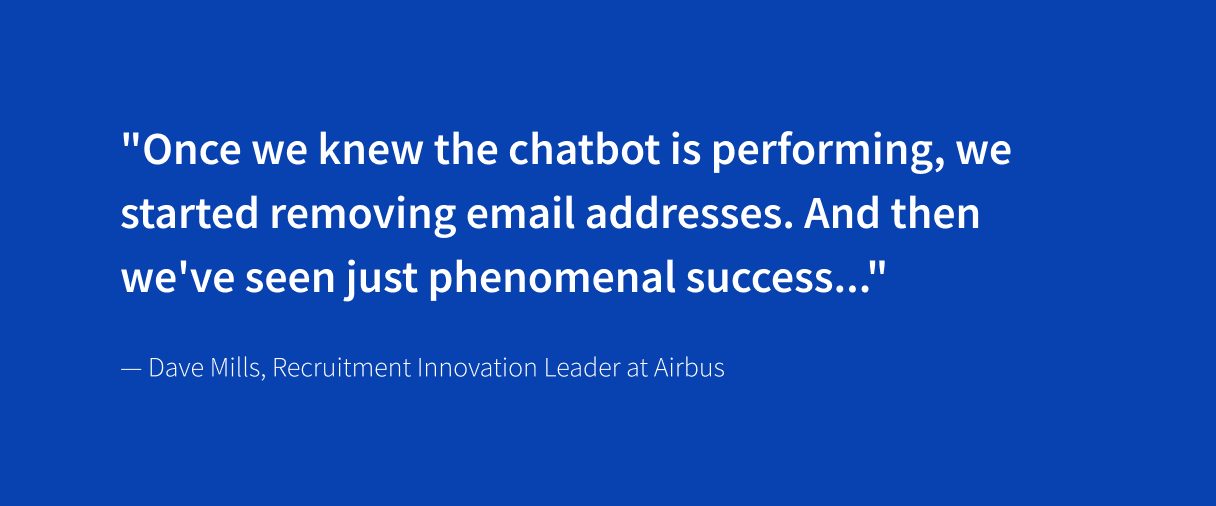
Imagine after 4 weeks of having a chatbot on your careers’ site there is so much engagement that you can remove the ‘[email protected]’ inbox. That’s exactly what Airbus could do when they saw an immediate high level of interaction from website users. Up to 60% of website their users engage outside working hours and their chatbot allows for their company to communicate 24/7, 365. You can check out their full recruitment automation chatbot in this ebook.


